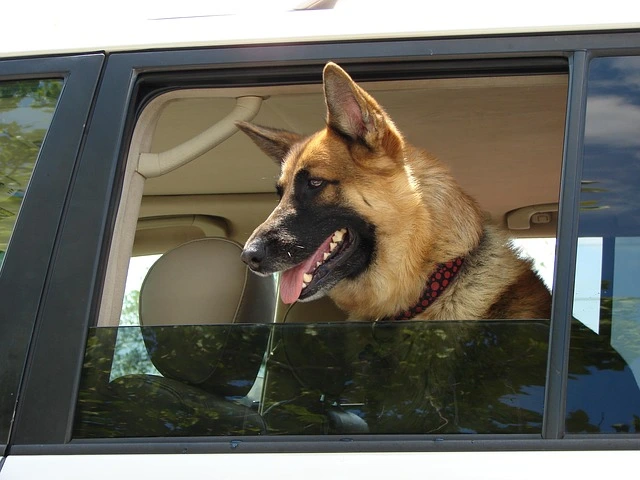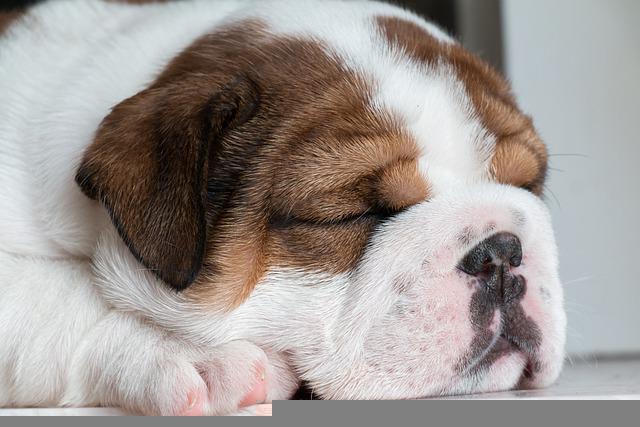10 Tips for Crate Training a Puppy While at Work
Leaving a crying puppy in the crate breaks every dog parent’s heart but putting your puppy in the crate for a few hours is something that can not be helped. In the end, a person has to work. Therefore, we have compiled these tips that will help in not only getting your puppy in his crate happily but will make sure that he enjoys his time while locked inside. Even if you work from home and belief that crate training your puppy and putting him through what looks like such a hard time is not essential, crate training is still recommended due to several reasons, including:
- 1- Choosing The Ideal Crate for Puppy
- 2- Introducing The Puppy to The Crate
- 3- Feeding The Puppy Inside the Crate
- 4- Train Puppy to Stay in The Crate
- 5- Leaving Your Puppy Alone in The Crate
- 6- Leaving The Puppy in Crate While at Work
- 7- Keep Dog Entertained in His Crate
- 8- How To Prevent Separation Anxiety
- 9- Monitoring Your Puppy While at Work
- 10- Crate training while Working from Home
- Leaving your puppy in a crate when you have to go away from the house will guarantee that your pup doesn’t end up trashing the house or more importantly, hurt himself while running around the place.
- Crate training also aids in potty training puppies. Since dogs inherently don’t like to relieve themselves at their place, your puppy is more likely to hold his bladder for longer periods if he is in his crate, which will eventually, teach him bladder control.
- Crate training your puppy also helps when traveling. Often puppies suffer from motion sickness and extreme anxiety when traveling in cars but being safely inside their crate helps calm them down.
Following the simple tips in this article, you can crate train your puppy in no time. This will help dog parents in having a guilt-free working day where they don’t have to worry about their poor pup waiting desperately for them to return home.

1- Choosing The Ideal Crate for Puppy
The key to successful crate training is an appropriately sized crate. The crate should not be too small or large, it should allow the puppy to sit, stand, and turn about easily, but any bigger than this may give your pup the idea that he can use one corner of the crate to relieve himself while staying in the clean corner himself. The economical option is to buy a large crate with partitions. When your pup is young, you can keep the crate small, and when he grows up, you remove the partition to make more space available and continue using the same crate instead of having to buy a larger one.
Remember not to leave your puppy in the small crate for more than four hours at a time, and if you must keep him confined for a longer period, keep some food, water, and toys in his crate. When starting the crate training process, keep in mind that initially, it is going to be tough and will require patience and time from your end. Therefore, start the process when you have time to spare, such as on vacations or weekends.
2- Introducing The Puppy to The Crate
Your puppy must associate his crate with comfort and good memories. Hence, when introducing your puppy to his crate, do it as patiently and gently as possible. Do not force your puppy into the crate, as that will only make him afraid and more reluctant to get in it. Instead, make the crate comfortable and interesting for your puppy. So, he gets curious and willingly enters it to explore. Lay down a soft blanket or a few pillows in there. You can also put in some toys or enrichment stuff.
In the beginning, place the crate in the living room of your house or any place where people usually hang out, so your dog feels included in the family and doesn’t think of his crate as a prison that separates him from his loved ones. Put your puppy’s favorite toy in the crate and let him enter the crate by himself. He might not even enter the crate the first few tries but eventually, he will get in the crate to explore which is progress in the right direction. Keep the crate clean at all times, as dogs don’t like their personal space being messy.
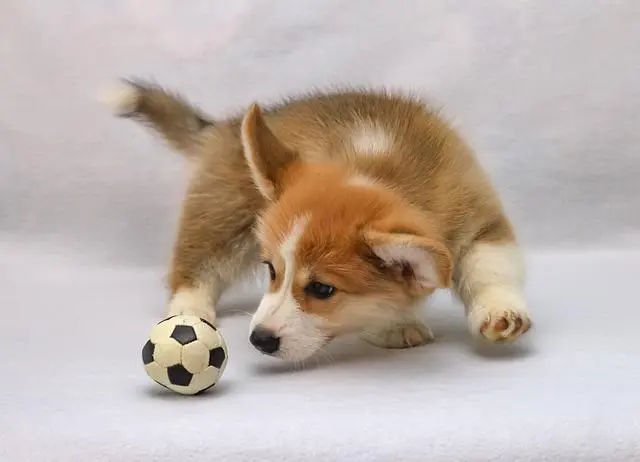
3- Feeding The Puppy Inside the Crate
Regularly feeding your puppy inside his crate is also a good way of making him associate the crate with comfort and happiness. Initially, put his food bowl near the entrance of the crate, when your puppy gets comfortable eating there, you can move the food bowl inside the crate, just beside the entrance, and then later in the training process, you can put the food bowl all the way inside. Do not keep the food bowl inside if your puppy is still scared around the crate. Instead, be patient and let your dog get comfortable getting in and out of the crate before proceeding.
After your dog starts entering the crate without any fear, you can begin hiding his favorite treats inside for him to find. In this way, your puppy will always be excited to get in the crate, awaiting the next treat he will find. During this training, do not close the door after your puppy enters the crate, as that will make your puppy think that he has been tricked and will cause your puppy to be wary of the crate in the future.
4- Train Puppy to Stay in The Crate
After you have established a positive association between the crate and your puppy, you can move on to the next step, which is teaching the puppy to stay calm inside a locked crate. When your puppy enters the crate, shut the door behind him and stay next to the crate while talking to your puppy in a soothing voice. Your puppy will probably whine, paw at the door, or appear distressed, during this all, you must remain calm and keep sitting beside the crate.
In the beginning, lock the door for short intervals, such as 5-10 min, and then gradually increase the time. Bear in mind that you should not open the crate’s door when your puppy whines or cries, as that will teach him that crying gets him out of the crate. On the contrary, only open the door when your pup calms down, and then reward him with treats and praises. This way, the puppy will learn that staying calm in the crate gets rewarded while whining doesn’t help.
Keep repeating the steps till your puppy gets used to remaining calm inside the locked crate then, you can start working on leaving him alone when locked in his crate.
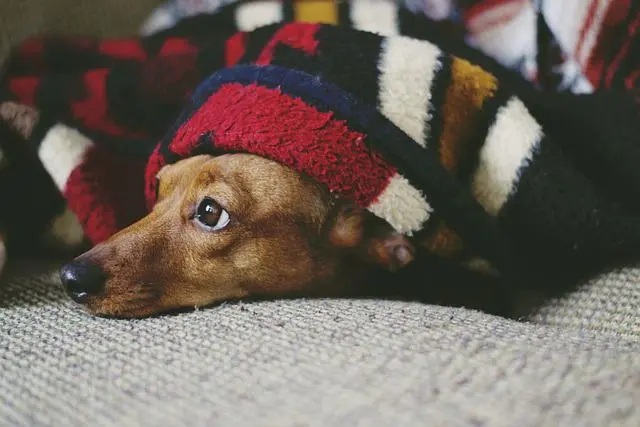
5- Leaving Your Puppy Alone in The Crate
A common mistake dog parents make when leaving their puppy is acting on their emotions. It is true that leaving your fur baby behind breaks your heart and you are afraid that your dog will miss you but if you let your emotions show by hugging the puppy, excessively petting him, or appearing sad in front of the puppy, your puppy will definitely pick up your emotions and will think that he is being locked inside the crate as punishment and then he will start whining and crying too.
The better option is to quietly leave the room when your pup is distracted and upon returning, reward your puppy with treats but do not appear too excited or give your puppy too much attention as that makes him associate being let out of the crate with happiness instead of learning to enjoy his time inside the crate. When talking to your locked puppy, always maintain a neutral and calm voice to let your puppy believe that everything is okay and that there is no need to panic.
With the correct training method, your puppy can learn to stay in the crate for long intervals, while training for only a short time.
6- Leaving The Puppy in Crate While at Work
The key to leaving your puppy when going to work is planning beforehand. When it’s time to leave your puppy at home there are several issues to consider, such as how long can your puppy hold his bladder, who will feed the pup his lunch and snacks, and are there any toys or enrichment activities that will keep him distracted and happy? Planning ahead will ensure that there are no last-minute issues to be dealt with.
- Starting with the bladder issue, a puppy can hold his bladder for one hour longer than how many months old he is, so a three-month-old puppy can hold his bladder for four hours. If your working hours are longer than this period, you need to plan ahead and decide who is going to walk your puppy or you may consider putting a puppy pee pad in a corner of your pup’s crate.
- For feeding your puppy, you can consider coming home at lunch break and if that is not possible there are other options to choose from, such as employing a dog-sitter to feed your puppy and take him on his walks, doggy day-care, or you may even ask your friend or neighbor to pop in and give your pup his food.
- An essential thing to consider when leaving your puppy alone for hours is keeping him occupied and giving him enough stuff to play with and interact with. Before leaving, in the morning, set aside some time to play with your pup or take him for a walk, that will keep him happy for the first half of the day. For the other half he can entertain himself with the toys you leave him with.
7- Keep Dog Entertained in His Crate
Looking for crate toys for your four-legged companion can be confusing since there are so many options out there but one thing to always consider is whether the toy you are buying is safe enough to leave with your puppy when unsupervised. With a few different toys and games, your puppy can remain pleasantly tired and happy throughout his time at home. Some toys that you can get are:
- Stuffed animals. Although, make sure that the toy does not have any sharp edges or anything that can tear off when chewed, such as buttons for the eyes.
- Treat balls. They are balls that have treats hidden inside them for the puppy to find. When getting a treat ball, make sure that the ball is large enough that it can not fit inside your puppy’s mouth, or it can be a choking hazard.
- Puzzle feeders. Giving your puppy his meal in a puzzle feeder will keep the puppy distracted for some time and the mental stimulation will ensure that your puppy is content and not bored.
- Rubber toys that are safe for chewing. Cover the toy in peanut butter or some other treat that your puppy loves and freeze the toy overnight. Your pup will have a great time licking the treat from the toy and the cold toy can even help to soothe the gums of your teething fur baby.
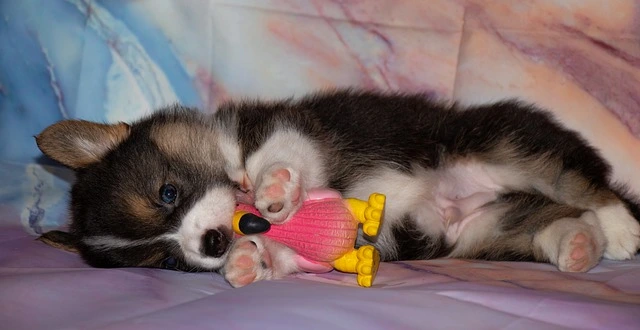
8- How To Prevent Separation Anxiety
One of the main reasons for puppies having separation anxiety is their owners making a big issue out of leaving the puppy behind, or the puppy getting bored at home with no enriching toys to play with. As mentioned earlier, saying a heart-warming goodbye to your puppy will only cause your puppy to be more anxious and will promote separation anxiety.
Some ways to deal with separation anxiety are:
- Leaving crate-safe toys for your puppy. Some of them are mentioned previously in the article, you can also get any other toy you prefer, just make sure that it is not a choking hazard as puppies tend to chew on their toys.
- You can use calming pheromones, which are chemical signals which animals use to communicate with each other. The pheromone Adaptil is released by the nursing mama dog, for a few days after giving birth to a litter, and it helps the pups in relaxing and calming down during their early days. Spraying Adaptil in the crate or having an Adaptil pheromone collar around your pup’s neck will help your dog relax. Adaptil is available as Comfort Zone commercially, in the form of spray bottles.
- Music also helps relax puppies and it will aid in combating the deafening silence of an empty house. If you are confused about the song choice, consider choosing solo piano music with simple arrangements and a slow tempo of sound, soft rock, or a piece of reggae music, as this type of music, has been most successful in reducing anxiety among dogs, according to the various studies conducted on the impact of music on dogs.
9- Monitoring Your Puppy While at Work
Leaving your puppy behind is hard, especially if your puppy suffers from separation anxiety or being left alone is new to him. Fortunately, some gadgets can help you keep an eye on your puppy while you stay comfortably in your office, such as pet cameras. Pet cameras are quite similar to baby monitors, investing in one will ensure that you can constantly monitor your fur baby and make sure that he is not up to something dangerous. Therefore, the fear that the puppy may hurt himself, which prevents their owners from fully relaxing and focusing on their work, will be dealt with.
Some pet cameras even come with a speaker through which you can talk to your puppy, console him, or praise him for his good behavior. While other pet cameras have additional features like games, such as chasing the red dot, which keeps the puppy excited and busy.
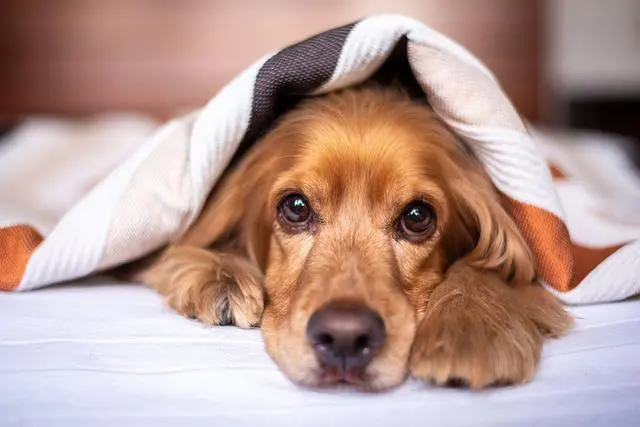
10- Crate training while Working from Home
If you work from home, it is still advised that you crate train your puppy as that will help you in the future for multiple purposes, such as while traveling, potty training, or if you have to run some errand. Crate training while at home is essentially similar to crate training while at work, except for the need for a schedule that is required in training at home. Lock your puppy in his crate, which should be kept in a separate room, and check in on him at regular intervals.
Since you are home, you will be tempted to check in on your puppy if he starts whining or crying but that will only cause the training period to increase. Therefore, follow a strict schedule when you leave your puppy in his crate, checking in on him every few hours and making sure that he has all the toys and other enrichment stuff to keep him entertained that a puppy would have if he was actually left at home. This will eventually lead to an independent dog who does not need your presence at all times to enjoy himself.

